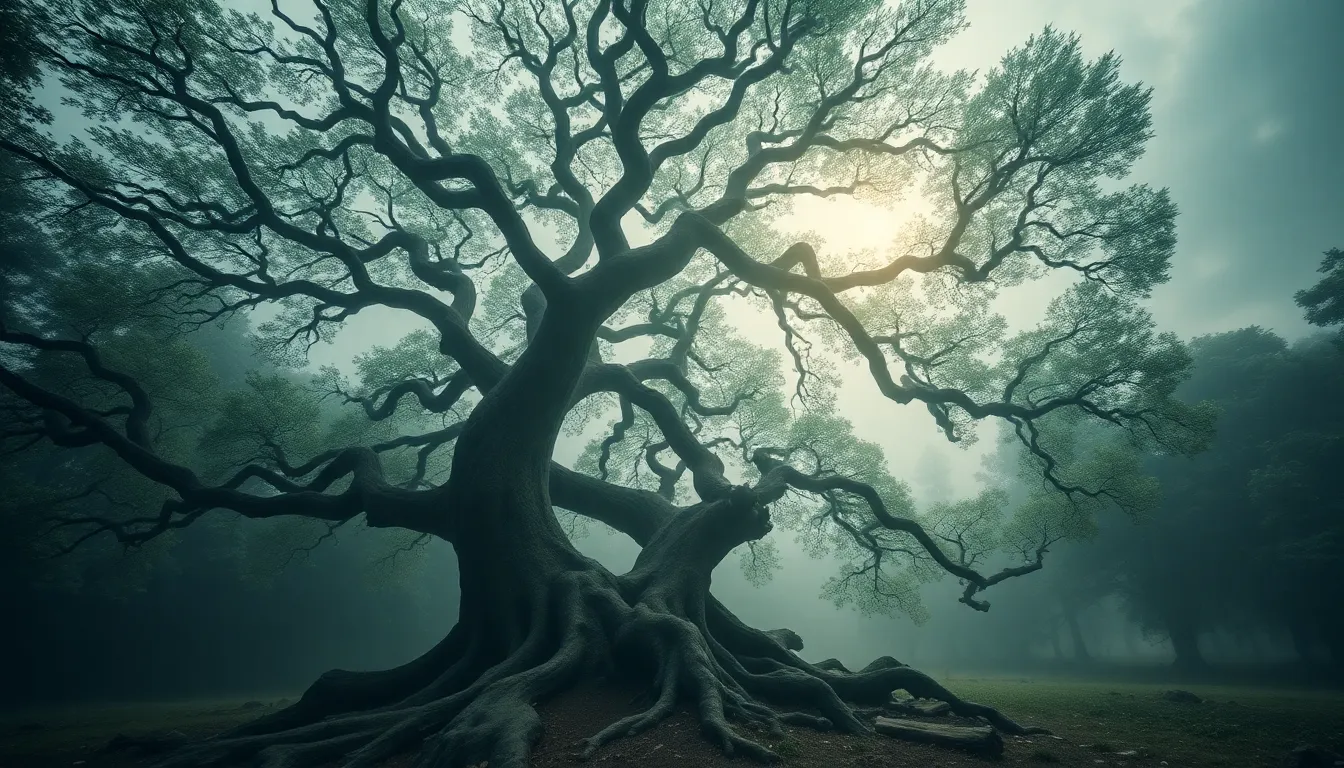The Tree of the Dead: Myths Surrounding the Sacred Cedar
I. Introduction
The sacred cedar tree has long captured the imagination of diverse cultures around the world. Known for its durability and aromatic wood, the cedar has played a significant role in both practical and spiritual realms. Its majestic presence in forests symbolizes strength, resilience, and a connection to the divine.
Throughout history, mythology has served as a lens through which humans comprehend the world and their place within it. Myths surrounding the cedar tree reflect deep-seated beliefs about life, death, and the afterlife, making it a vital subject of study in understanding human culture.
This article aims to explore the myths and historical significance of the sacred cedar, its role in various spiritual practices, and its ecological importance, while also addressing misconceptions surrounding this revered tree.
II. Historical Significance of the Cedar Tree
The cedar tree has held a place of reverence in many ancient civilizations, its wood prized for construction and ceremonial purposes.
A. Ancient civilizations and their reverence for cedar
- The Sumerians used cedar for temple construction, believing it to be a gift from the gods.
- In Ancient Egypt, cedar was a key material for building boats and coffins, reflecting its importance in funerary practices.
- The Phoenicians exported cedar wood across the Mediterranean, symbolizing wealth and prosperity.
B. Cedar in religious texts and rituals
Cedar trees are mentioned in various religious texts, including the Bible, where they symbolize strength and longevity. In the Old Testament, the cedars of Lebanon were used to build King Solomon’s temple, indicating their sacred status.
C. The role of cedar in burial practices
Cedar was often used in ancient burial practices, believed to provide protection and ensure a safe passage to the afterlife. Its aromatic properties were thought to ward off decay and evil spirits.
III. The Cedar Tree in Mythology
Across the globe, cedar trees have been woven into the fabric of mythology, serving as potent symbols in various cultures.
A. Overview of global myths featuring cedar
Myths often personify the cedar, attributing it with divine qualities. In many traditions, the cedar is seen as a bridge between the earthly realm and the heavens.
B. The Cedar of Lebanon: Symbolism in ancient cultures
The Cedar of Lebanon, in particular, is steeped in symbolism. It has been viewed as a symbol of eternity, strength, and resilience, often depicted in art and literature as a divine tree.
C. Cedar in Native American folklore
In Native American cultures, cedar holds a sacred place. It is often used in rituals for purification and protection, embodying the spirit of life and renewal.
IV. The Association of Cedar with Death and the Afterlife
The cedar tree’s association with death and the afterlife is prevalent in various myths and practices.
A. Myths linking cedar to the underworld
Many cultures believe that cedar trees serve as gateways to the underworld, connecting the living with the spirits of the deceased.
B. Cedar as a protector against evil spirits
Cedar is often burned in ceremonies to cleanse spaces and protect individuals from malevolent forces, reinforcing its role as a spiritual guardian.
C. Ritual uses of cedar in mourning and remembrance
During mourning rituals, cedar branches are sometimes used to symbolize the eternal connection between the living and the dead, creating a space for remembrance and reflection.
V. The Sacred Cedar in Modern Spiritual Practices
In contemporary society, the sacred cedar continues to be revered in various spiritual practices.
A. Contemporary interpretations of cedar’s significance
Many modern spiritual practitioners view cedar as a symbol of wisdom and protection, often incorporating it into meditation and healing rituals.
B. Use of cedar in meditation and healing
The aroma of cedarwood is believed to enhance focus and clarity during meditation, promoting a deeper connection to the self and the universe.
C. Cedar in environmental spirituality
As environmental awareness grows, cedar trees are increasingly seen as symbols of ecological balance, encouraging stewardship of the natural world.
VI. The Ecological Importance of Cedar Trees
Beyond their cultural and spiritual significance, cedar trees play a crucial role in maintaining ecological balance.
A. Biodiversity and habitat provided by cedar forests
Cedar forests support a diverse range of flora and fauna, providing habitat for various species and contributing to overall ecosystem health.
B. Cedar’s role in ecosystem stability
Cedar trees help stabilize soil, reduce erosion, and maintain water quality, making them vital to the health of their ecosystems.
C. Conservation efforts and challenges facing cedar trees
Despite their importance, cedar trees face threats from deforestation, climate change, and pests. Conservation efforts are essential to protect these sacred giants.
VII. Cultural Representations of the Cedar Tree
The cedar tree has inspired countless works of art, literature, and music, symbolizing various themes across cultures.
A. Art and literature inspired by cedar
Many artists and writers have drawn inspiration from the cedar, using it as a symbol of strength, endurance, and beauty in their works.
B. Cedar in music and performance
Musicians often incorporate cedar’s symbolism into their lyrics and performances, reflecting its spiritual and emotional significance.
C. The cedar tree as a national symbol in various countries
In some nations, the cedar tree symbolizes national identity and pride, featuring prominently in flags and emblems.
VIII. Misconceptions and Misinterpretations
While the cedar tree is revered, several misconceptions exist regarding its symbolism and ecology.
A. Common myths vs. scientific facts about cedar
Many myths about cedar trees lack scientific backing, leading to misunderstandings about their ecological roles and benefits.
B. Cultural appropriation of cedar symbolism
As cedar’s significance spreads globally, issues of cultural appropriation arise, highlighting the need for respectful representation of its symbolism.
C. The impact of misinformation on conservation efforts
Misconceptions about cedar trees can hinder conservation efforts, emphasizing the importance of accurate information in environmental advocacy.
IX. Personal Reflections and Experiences with Cedar
The emotional and psychological connections people have with cedar trees are profound and varied.
A. Anecdotes from individuals connected to cedar trees
Many individuals share stories of personal growth and healing tied to their experiences with cedar, showcasing its powerful influence.
B. Exploring personal and communal rituals involving cedar
Cedar is often used in communal rituals, fostering a sense of connection and shared spiritual experience among participants.
C. The emotional and psychological impact of cedar in life and death
The presence of cedar can evoke strong emotions, serving as a reminder of life’s impermanence and the beauty of remembrance.
X. Conclusion
The sacred cedar tree embodies a rich tapestry of myths and significance across cultures. From its historical reverence in ancient civilizations to its modern spiritual practices, cedar continues to inspire and connect people to deeper meanings of life and death.
As we explore the myths surrounding the cedar, it becomes clear that respecting and preserving these magnificent trees is crucial for future generations. The enduring legacy of the cedar in human culture and spirituality serves as a testament to its importance in our lives.



